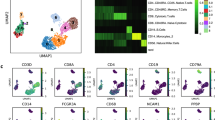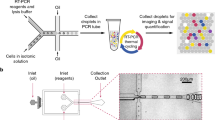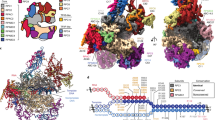Summary
Reverse transcriptase polymerase chain reaction (RT-PCR) is increasingly used to detect small numbers of circulating tumour cells, though the clinical benefit remains controversial. The largest single contributing factor to the controversy of its value is the different approaches to sample processing. The aim of this study was to compare the sensitivity and reproducibility of RT-PCR for the detection of tumour cells after four commonly used different methods of sample processing. Using RT-PCR, one tumour cell spiked in 2 ml of whole blood was detected after analysis of separated mononuclear cell RNA, whole blood total or poly-A+RNA. No false positives were identified with any method. However, the reproducibility of tumour cell detection was reduced after isolation of the mononuclear cell fraction. Only analysis of poly-A+RNA had a sensitivity of 100% in all the cell spiking experiments. In patient blood samples, analysis of poly-A+RNA increased the number of blood samples positive for tyrosine hydroxylase (TH) mRNA compared with those positive after analysis of total RNA. This may reflect high levels of cDNA reducing the efficiency of the PCR. Isolation of poly-A+RNA increases the sensitivity and reproducibility of tumour cell detection in peripheral blood.
Similar content being viewed by others
Article PDF
Change history
16 November 2011
This paper was modified 12 months after initial publication to switch to Creative Commons licence terms, as noted at publication
References
Brodeur, G. M., Seeger, R. C., Barrett, A., Berthold, F., Castleberry, R. P., D’Angio, G., De Bernardi, B., Evans, A. E., Favrot, M., Freeman, A. I., Haase, G., Hartmann, O., Hayes, F. A., Hebon, L., Kemshead, J., Lampert, F., Ninane, J., Ohkowa, H., Philip, T., Pinkerton, C. R., Pritchard, J., Sawada, T., Siegel, S., Smith, E. I., Tsuchida, Y. & Voute, P. A. (1988). International criteria for diagnosis, staging and response to treatment in patients with neuroblastoma. J Clin Oncol 6: 1874–1881.
Burchill, S. A., Bradbury, F. M., Smith, B., Lewis, I. J. & Selby, P. (1994a). Neuroblastoma cell detection by reverse transcriptase-polymerase chain reaction (RT-PCR) for tyrosine hydroxylase mRNA. Int J Cancer 57: 671–675.
Burchill, S. A., Bradbury, F. M. & Lewis, I. J. (1994b). Early clinical evaluation of reverse transcriptase- polymerase chain reaction (RT-PCR) for tyrosine hydroxylase. Eur J Cancer 31A: 553–556.
Fidler, I. (1990). Critical factors in the biology of human cancer metastasis. Cancer Res 50: 6130–6138.
Gläser, R., Rass, K., Seiter, S., Hauschild, A., Christophers, E. & Tilgen, T. (1997). Detection of circulating melanoma cells by specific amplification of tyrosinase complementary DNA is not a reliable tumour marker in melanoma patients: a clinical two centre study. J Clin Oncol 15: 2818–2825.
Higuchi, R. (1989). Principles and applications for DNA amplification. In PCR Technology, Erlich H (ed.), pp. 31–43, Stockton Press: New York, USA
Jackson, D. P., Hayden, J. D. & Quirke, P. (1991). PCR. A Practical Approach, IRL Press
Johnson, P., Burchill, S. A. & Selby, P. (1995). The molecular detection of tumour cells. Br J Cancer 72: 268–276.
Jung, F. A., Buzaid, A. C., Ross, M. I., Woods, K. V., Lee, J. J., Albitar, M. & Grimm, E. A. (1997). Evaluation of tyrosinase mRNA as a tumour marker in the blood of melanoma patients. J Clin Oncol 15: 2826–2831.
Keilholz, U. (for the EORTC Melanoma Cooperative Group) (1996). Diagnostic PCR in melanoma; methods and quality assurance (review). Eur J Cancer 32: 1661–1663.
Keilholz, U., Willhauck, M., Rimoldi, D., Brasseur, F., Dummer, W., Rass, K., De Vries, T., Blaheta, J., Voit, C., Lethe, B. & Burchill SA (for, EORTC-MCG) (1998). Reliability of RT-PCR based assays for detection of circulating tumour cells: a quality-assurance initiative of the EORTC Melanoma Cooperative Group. Eur J Cancer 34: 750–753.
Kuroda, T., Saeki, M., Nakano, M. & Mizutani, S. (1997). Clinical application of minimal residual neuroblastoma cell detection by reverse transcriptase-polymerase chain reaction. J Pediatr Surg 32: 69–72.
Miyajima, Y., Kato, K., Numata, S., Kudo, K. & Horibe, K. (1995). Detection of neuroblastoma cells in bone marrow by the reverse transcriptase polymerase chain reaction for tyrosine hydroxylase mRNA. Cancer 75: 2757–2761.
Miyajima, Y., Horibe, K., Fukuda, M., Matsumoto, K., Numata, S., Mori, H. & Kato, K. (1996). Sequential detection of tumor cells in the peripheral blood and bone marrow of patients with stage IV neuroblastoma by the reverse transcription polymerase chain reaction for tyrosine hydroxylase mRNA. Cancer 77: 1214–1219.
Moss, T. J. & Sanders, D. G. (1990). Detection of neuroblastoma cells in blood. J Clin Oncol 8: 736–740.
Moss, T. J., Reynolds, C. P. & Sather, H. N. (1991). Prognostic value of immunocytological detection of bone marrow metastases in neuroblastoma. N Engl J Med 324: 219–226.
Rogers, D. W., Treleaven, J. G., Kemshead, J. T. & Pritchard, J. (1989). Monoclonal antibodies for detecting bone marrow invasion by neuroblastoma. J Clin Pathol 42: 422–426.
Author information
Authors and Affiliations
Rights and permissions
From twelve months after its original publication, this work is licensed under the Creative Commons Attribution-NonCommercial-Share Alike 3.0 Unported License. To view a copy of this license, visit http://creativecommons.org/licenses/by-nc-sa/3.0/
About this article
Cite this article
Burchill, S., Lewis, I. & Selby, P. Improved methods using the reverse transcriptase polymerase chain reaction to detect tumour cells. Br J Cancer 79, 971–977 (1999). https://doi.org/10.1038/sj.bjc.6690155
Received:
Revised:
Accepted:
Published:
Issue date:
DOI: https://doi.org/10.1038/sj.bjc.6690155
Keywords
This article is cited by
-
Molecular Detection of Circulating Tumor Cells in the Peripheral Blood of Patients with Colorectal Cancer Using RT‐PCR: Significance of the Prediction of Postoperative Metastasis
World Journal of Surgery (2006)
-
Detection of tumor cell dissemination in pancreatic ductal carcinoma patients by CK 20 RT-PCR indicates poor survival
Journal of Cancer Research and Clinical Oncology (2005)
-
Comparison of the RNA-amplification based methods RT–PCR and NASBA for the detection of circulating tumour cells
British Journal of Cancer (2002)



